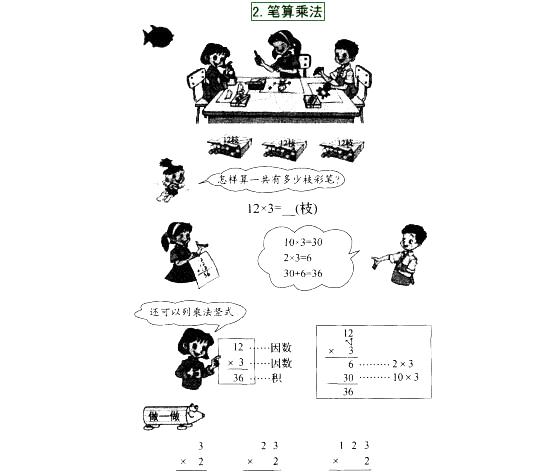当前位置:首页 → 职业资格 → 教师资格 → 中学英语学科知识与教学能力->请阅读Passage2,完成小题。Passage2Thesu
请阅读Passage 2,完成小题。
Passage 2
The subject of ballads,books and films, Robin Hood has proven to be one of popular culture's mostenduring folk heroes. Over the course of 700 years, the outlaw fromNottinghamshire who robs the rich to give to the poor has emerged as one of themost enduring folk heroes in popular culture-and one of the most versatile. Buthow has the legend of Sherwood Forest's merry outlaws evolved over time? Did areal Robin Hood inspire these classic tales?
Beginning in the 15thcentury and perhaps even earlier, Christian revelers in certain parts ofEngland celebrated May Day with plays and games involving a Robin Hood figurewith near-religious significance. In the 19th century, writer-illustrators likeHoward Pyle adapted the traditional tales for children, popularizing them inthe United States and around the world. More recently, bringing Robin to thesilver screen has become?a rite of passage?for directors ranging fromMichael Curtiz and Ridley Scott to Terry Gilliam and Mel Brooks.
Throughout Robin'sexistence, writers, performers and filmmakers have probed their imaginationsfor new incarnations that resonate with their respective audiences. In14th-century England, where agrarian discontent had begun to chip away at thefeudal system, he appears as an anti-establishment rebel who murders governmentagents and wealthy landowners. Later variations from times of less socialupheaval dispense with the gore and cast Robin as a dispossessed aristocrat witha heart of gold and a love interest, Maid Marian.
Academics, meanwhile,have combed the historical record for evidence of a real Robin Hood. Englishlegal records suggest that, as early as the 13th century, “Robehod,” “Rabunhod”and other variations had become common epithets for criminals. But what hadinspired these nicknames: a fictional tale, an infamous bandit or an amalgam ofboth? The first literary references to Robin Hood appear in a series of 14th-and 15th-century ballads about a violent yeoman who lived in Sherwood Forestwith his men and frequently clashed with the Sheriff of Nottingham. Rather thana peasant, knight or fallen noble, as in later versions, the protagonist ofthese medieval stories is a commoner. Little John and Will Scarlet are part ofthis Robin’s “merry” crew-meaning, at the time, an outlaw's gang-but MaidMarian, Friar Tuck and Alan-a-Dale would not enter the legend until later,possibly as part of the May Day rituals.
While most contemporaryscholars have failed to turn up solid clues, medieval chroniclers took forgranted that a historical Robin Hood lived and breathed during the 12th or 13thcentury. The details of their accounts vary widely, however, placing him inconflicting regions and eras. Not until John Major's “History of Greater Britain” (1521), for example, is he depicted asa follower of King Richard, one of his defining characteristics in modem times.
?We may never know forsure whether Robin Hood ever existed outside the verses of ballads and pages ofbooks. And even if we did, fans, young and old, would still surely flock toEngland's Nottinghamshire region for a tour of the legend's alleged formerhangouts, from centuries-old pubs to the Major Oak in Sherwood Forest. What wedo know is that the notion of a brave rebel who lives on the outskirts ofsociety, fighting injustice and oppression with his band of companions, hasuniversal appeal-whether he's played by Erroll Flynn, Russell Crowe or even, ason a 1979 episode of “The Muppet Show,” Kermit the Frog.
Which of the following methods is used by the author in elaborating his points'
推断题。本文讲述了RobinHood作为一个有象征意义的人物,在不同的时期,人们对于他真正的身份和来源的不同版本的介绍。作者在陈述这些内容的时候,采取了对比和比较的方法。故本题选B。
请认真阅读下文,并按要求作答。

问题(一):如指导中年段小学生学习上述内容,试拟定教学目标和教学重点。(15分)
问题(二):根据拟定的教学目标,设计新授部分的教学流程,并简要说明理由。(25分)
请认真阅读下文,并按要求作答。
春 晓
唐 孟浩然
春眠不觉晓,处处闻啼鸟。
夜来风雨声,花落知多少。
问题(一):请对《春晓》作简要赏析。(10分)
问题(二):如指导低年段小学生学习本文,试拟定教学目标和教学重点。(8分)
问题(三):根据拟定的教学目标和教学重点,设计课堂教学环节并简要说明理由。(22分)
以下是一位教师教学《乌鸦喝水》总结全文时的片段,阅读并回答问题。
师:你觉得这是一只怎样的乌鸦?
生1:它很聪明,自己想办法喝到水了。
生2:乌鸦爱动脑,它想的办法挺巧妙。
生3:乌鸦很勤快,渴了的时候到处找水喝。
生4:乌鸦不讲卫生,小石子多脏呀!
生5:乌鸦不太会动脑筋,挺愚蠢的。
生6:乌鸦不会唱歌,叫声很烦人……
(教师对每种答案都点头肯定或微笑示意,特别对后四种意见大力赞赏)
问题:你认为这个片段的教学中有哪些优点?存在什么问题?试加以评述。(20分)
下面是一位教师关于“菜”字的教学,阅读并回答问题。
师:小朋友,你是用什么办法记住“菜”字的?
生1::我喜欢吃榨菜,榨菜的包装袋上有这个字,我就记住了。
生2:我在菜市场门口的牌子上看到过这个字。
师:你们能联系生活来认字,很好。还有不同的办法吗?
生3::我想写一写,记住这个“菜”字。
师:这是个好办法。
生4:“草”字头加“采”就是“菜”,青菜的“菜”。
师:加一加记住这个字,也是好办法。还有不同意见吗?
生5:“花”字去掉下面部分,加上“采”,就是“菜’’。
生6:“花”字去掉下面的“化”,“彩”字去掉右边的三撇,合起来就是“菜”。
生7:“苗”字去掉下面的“田”,加上“采”就是“菜”。
师:很好,小朋友们想出了很多办法记住了这个字。让我们再来读一读。
问题:你认为该教师的教学符合哪些新课程理念?还存在什么问题?试加以评述。
简述教学中影响学生行为改变的基本方法。
简述小学教学评价的主要方法。
一般在教学开始前使用,用来摸清学生的现有水平及个别差异,以便安排教学的评价属于( )。
小学儿童对教师怀有特殊的信赖感,把教师看作无所不晓、无所不能的人,愿听从教师的教导,小学生的这种心理倾向称之为( )。
校风是学校中物质文化、制度文化和以下哪种文化的统一体?( )。
以实践作业为主的兴趣小组是( )。